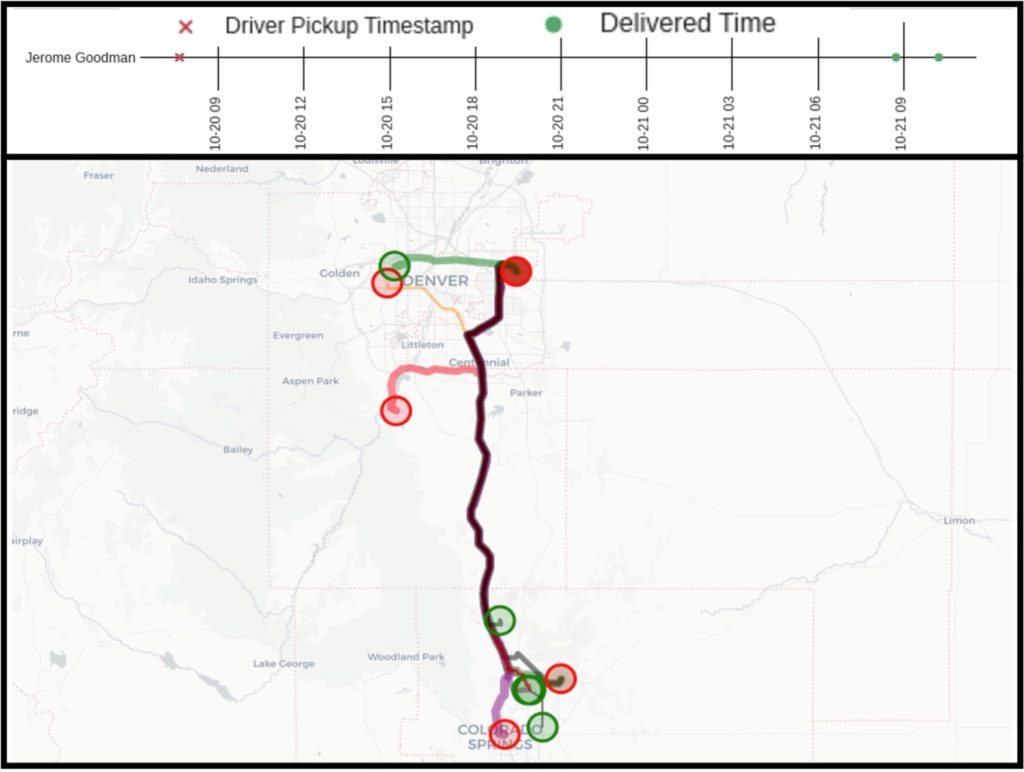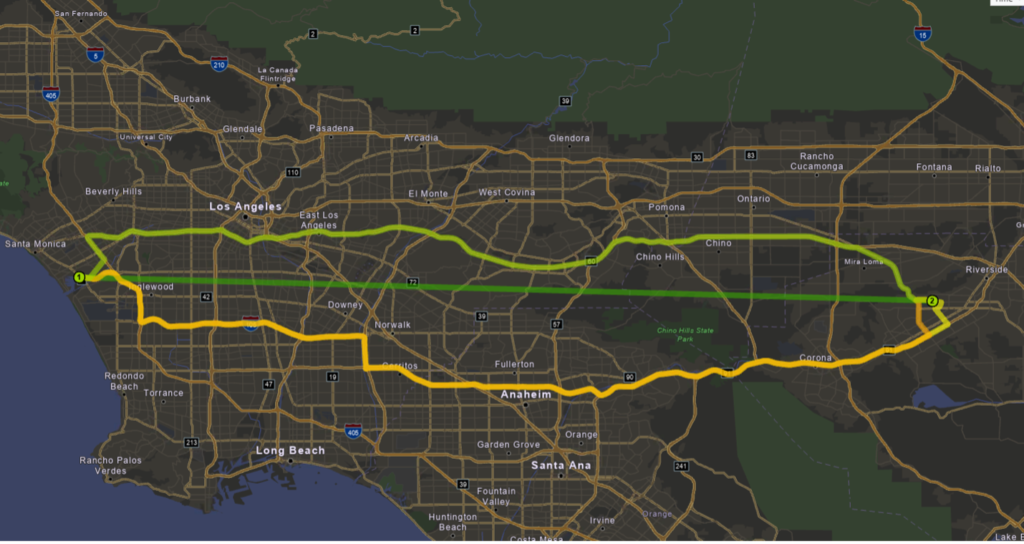The RunBuggy Order Pooling is a car shipping consolidation engine that utilizes cutting-edge data science and technology to reduce shipper costs, improve transporter productivity, and minimize carbon emissions. The order pooling algorithm is cloud-based and runs sophisticated Machine Learning (ML) computations to maximize the number of cars being hauled in each transport.
Our historical data shows, on average, 35% of incoming transportation orders will have at least one vehicle added to the order because of this order pooling algorithm. RunBuggy has found that a single addition to a transport order reduces order acceptance time by 36 hours, which translates into happier shippers and more earnings for transporters. In addition, the order pooling algorithm reduces or eliminates the mileage associated with single moves. Fewer miles driven means less CO2 emissions, fewer traffic accidents, and lower fuel costs for transporters.
Here is an example of the order pooling algorithm in action:
RunBuggy receives three separate transport orders – one from a Dallas car dealership that wants to ship 5 cars to San Francisco; one from an auction in Phoenix that needs to move 3 cars to Sacramento, and one from a college student at the University of Texas at Dallas who wants to bring their car with them for a new job they landed in San Jose.
With RunBuggy’s order pooling algorithm, these 3 orders are identified as having a similar route, automatically grouped together (i.e. “pooled”), and assigned to a verified transporter on the RunBuggy Marketplace that is nearby, has a truck with the right capacity, and has a history of transporting cars in this “lane.”
Without RunBuggy, an experienced car transportation broker will spend hours finding, calling, and coordinating with multiple transporters to handle these three orders –a waste of time and money.
The spatiotemporal aspect of transportation orders coupled with each order’s unique characteristics turns order pooling into a challenging, computationally intense optimization problem.
Companies like Uber run similar computations for their UberPool service, however, Uber is focused on mostly local moves (ex. a person’s home to the airport) and there are few restrictions placed on the types of vehicles Uber drivers can use. In contrast, automotive transportation involves characteristics such as truck type, vehicle size, vehicle condition, pick-up and drop-off location constraints, road conditions, weather, traffic, and specific delivery schedules defined by the customer.
For instance, a transportation order for a Ferrari exotic race car that needs to be shipped in an enclosed transporter requires a quite distinct set of requirements than an oversized, non-operational Jeep Wrangler.
The graphic below illustrates several routes that RunBuggy’s order pooling algorithm can group altogether, coupled with the uniqueness of each order, and potentially with respect to the targeted driver’s real-time location (depicted on the top of the map). This data also provides a feedback loop to constantly improve the performance of the order pooling.

One of the most important underlying computations for accurate order grouping is to be able to compute trucking drive time between various locations. Runbuggy has employed a Network-based Traffic data-enabled infrastructure to find the shortest trucking drivetimes considering real-time and typical traffic conditions of a specific hour of day and day of the week depending on the application.
The following map depicts a sample shortest drive-time between two points; dark green is the straight-line distance between two points, light green is the shortest trucking path during free flow speed hours, orange is the shortest driving path during a sample weekday afternoon rush hour (i.e., Thursday 5:00 PM), and yellow is the shortest trucking path during the same sample after-noon rush hour time.

In the above example, both pickup and drop-off locations are close to highways leading to similar suggested routes for both trucks and passenger cars.
The following maps illustrate the substantial change in the suggested shortest path for a hauler versus a passenger car. RunBuggy’s transportation analysis infrastructure can identify the shortest path for high-capacity car-hauling trucks, which is not available on Google or Apple Maps, accounting for route constraints and each individual order’s needs.

The data science team at RunBuggy has a big focus on optimizing car transportation using the latest technology like order pooling. We believe we can have a substantial, and positive impact on the cost and time to ship a car, as well as the sustainability of our environment.
Stay tuned for the next post in this series to learn more about how RunBuggy employs innovative data science and technology to support its business partners.



